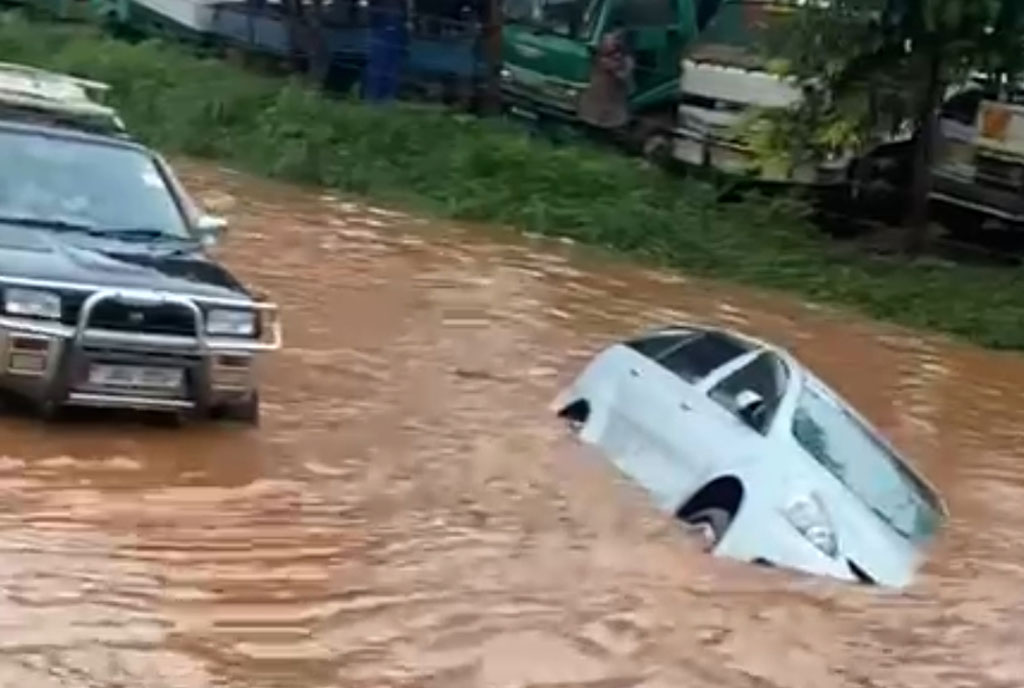Prime
Preparing your car for the rainy season

Leave at least five seconds of following distance between your car and the one in front, and do not feel pressure to follow the set speed limit. PHOTO/file
What you need to know:
While it is important to get your car serviced regularly, it is not possible to turn up to a service centre every day after heavy rain. For this reason and many more, it is crucial to know a few tips and tricks to keep your car shielded from water and corrosion.
The rainy season is here and is expected to last. Other than the road condition, your car’s mechanical state plays an important role not only in keeping your car safe but also yourself and other occupants safe.
For example, some of the important aspects to pay attention to is driving on tyres that have treads. However good your brakes are, tyres with treads are also pivotal in bringing your car to a complete stop or reducing speed.
“Technically, when braking on any road surface while it rains, treads put up a motion resistance between the car tyres and the road surface since all road surfaces are slippery. If your tyres do not have treads, your car will stay in rolling mode, no matter how hard you step on the brake pedal. It can only be stopped by the objects it rams into,” says Isaac Amanya, a mechanic.
Service your air conditioner
While it rains, the interior of your windscreen in most cases gets covered with fog, restricting road visibility. Some motorists or co-drivers with defunct air conditioners tend to use a cloth to clean off the fog. This, to Amanya, is not sustainable in the long run.
“If it is raining heavily to a point that you cannot leave any open space in the windows, hot air from the air conditioner is the only alternative to clear the inner part of the windscreen because it counters the fog by pointing the AC vents to the windscreen. If your AC is not functional, have it serviced by a technician. The vents could be clogged with dirt or just due for a refill,” says Richard Mugerwa, an AC technician in Bukoto, a Kampala suburb.
Turn on head or fog lights
Modern cars have functional features such as daytime running lights (DRL) and fog lights, some of which turn on either upon detection of a change in weather or as soon as the car engine starts running. There are also cars whose fog lights have to be turned on by the driver.
“One of the ways you can be visible to other motorists is by turning on your fog or headlights. Sometimes, the rain is so heavy that your car cannot be seen by the motorist from the oncoming lane or other road users. Before leaving home, check and ensure that your brake and head or fog lights are functional,” Amanya advises.
Replace wipers
As the air conditioner, the primary purpose of car wipers is to wipe off rain water from the outer side of the windscreen and allow you maintain sight of the road. Sometimes, trucks and other vehicles also splash dirty water on the windscreen. When the wiper blades are old, they will not be able to properly clean the windscreen. Also, check your windscreen water tank and make sure it has enough water.
According to www.thisdaylive.com, you can also use a water-repellant product that will improve the visibility as the raindrops will roll off, rather than smearing the glass.
Inspecting under the carriage
www.thisdaylive.com states that one of the best tips is to generously apply anti-rusting coating on the underbody. The standing water, splashing puddles, moisture, and dirt/grime mixture can lead to the effectiveness of your brake system. The water may even seep into any cracked or loose CV joints, washing away lubrication, and doing more damage.
Make sure you avoid spraying it on the engine/exhaust component and brake discs to avoid any accidents. You should also regularly clean under the carriage, making sure there are no rust forming, or leaves and dirt stuck, which might be hindering the performance.
Safety tips when on the road
Micheal Kananura, the public relations officer of the traffic directorate, says during the rainy season, reduce your driving speed to avoid skidding or losing control over the vehicle.
“When driving at high speed in the rain, and the car refuses to stop or skids off the road. Negotiating corners also becomes hard and sometimes impossible and the car overturns. This means chances of survival are slim because any increase in driving speed increases the severity of the road crash,” Kananura advises.
Avoid stationary, running water
Recently, social media was awash with photos of a car that was almost entirely submerged in stagnant water after a heavy downpour. While modern vehicles door seals should keep water out, often, this makes your car light.
In fact, the average modern sized family car can float when water is only 30cm deep. It is better to find an alternative route that adds 10 minutes to your drive than have your car float away.
Most roads dip down either side so that water can flow down into drains, so naturally, the highest point of a road is in the middle. You should, therefore, drive down the middle of the road (if it is safe to) whilst taking it in turns to let oncoming vehicles pass.
Large vehicles are especially hazardous as they can create waves that will push the water higher than expected and cause potential damage to your car.
Avoid tailgating
Tailgating is the act of driving so close to the motorist ahead of you. This act is in most cases triggered by impatience. Some of the dangers of tailgating is that there will be higher risks of ramming into other cars ahead of you because you will have little time and space to steer to a safe place.



